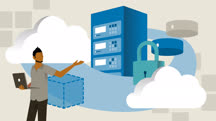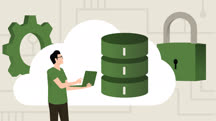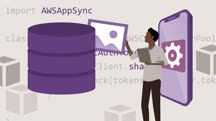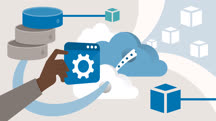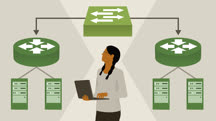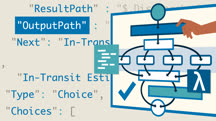Course catalog
Categories
Showing 21-40 of 214 items.
AWS Certified Solutions Architect - Associate (SAA-C02): 9 Services and Design Scenarios
Learn AWS design best practices—and how to apply them in real-world scenarios—as you prepare for the 2020 AWS Certified Solutions Architect - Associate (SAA-C02) exam.
AWS CLI: Tips and Tricks
Get quick tips for carrying out common tasks in Amazon Web Services (AWS) using PowerShell and the command-line interfaces (CLIs) available from Amazon.
AWS DevOps: Continuous Docker Deployment to AWS Fargate from GitLab
Learn how to create an automated, continuous DevOps pipeline for container-based applications using AWS Fargate and GitLab.
AWS Essential Training for Architects
Explore AWS from the architect’s perspective, focusing on the foundations you need to build scalable and reliable cloud-based application architectures.
AWS Essential Training for Developers
Explore the different ways developers can host applications within AWS, as well as how to integrate cloud technologies for better uptime, enhanced security, and faster development.
AWS for Architects: High Availability and Continuous Deployment
Learn how to get your apps in front of users by using continuous deployment and high availability. Also, prepare for the AWS Certified Solutions Architect – Professional exam.
AWS for Developers: AWS AppSync with GraphQL
Leverage AWS AppSync and GraphQL in your mobile app development workflow. Learn how to develop a mobile app with real-time updates and online data with offline availability.
AWS for Developers: Data-Driven Serverless Applications with Kinesis
Serverless adoption is growing rapidly. Developers can stay sharp by learning about serverless applications. This course focuses on Kinesis, an AWS serverless service.
AWS for Developers: DynamoDB
Learn how to leverage DynamoDB, the high-performance NoSQL database solution hosted on the AWS cloud. This course covers planning, proper data modeling, coding, and support.
AWS for Developers: ECS and Multi-Region Load Balancing
Scale across multiple AWS regions for high availability and faster response times. Learn how to set up multi-region load balancing with Amazon Route 53.
AWS for Developers: Identity Access Management (IAM)
Securely manage access to AWS resources and services with AWS Identity and Access Management (IAM). Learn how to use IAM to manage user accounts, groups, roles, and permissions.
AWS for Developers: PayPal Payment Processing with Lambdas
Learn how to leverage Lambdas to simplify the implementation of PayPal payment processing.
AWS for Developers: RDS MySQL Database with Lambdas
Learn how to leverage RDS (relational databases) for MySQL Database with Lambdas.
AWS for Developers: S3
Learn how to securely store and retrieve data with Amazon Simple Storage Service (S3), one of the most popular and reliable service offerings in Amazon Web Services (AWS).
AWS for Developers: Simple Email Service (SES)
Learn how to use AWS Simple Email Service (SES), the cloud-based email delivery service, for a cost-effective and simple way to reliably send emails to your users.
AWS for Developers: Step Functions
Learn how to use AWS Step Functions to quickly design and run serverless workflows that allow you to coordinate multiple AWS services.
AWS for DevOps: Continuous Delivery and Process Automation
Learn how to establish continuous delivery and automate processes with Amazon Web Services (AWS). Review topics in the first domain of the AWS Certified DevOps Engineer exam.
AWS for DevOps: High Availability and Elasticity
Learn tools, best practices, and design patterns for effective application scaling (elasticity) and high availability for applications running on the AWS cloud.
AWS for DevOps: Monitoring, Metrics, and Logging
Learn about instrumenting production AWS applications. Explore topics from the Monitoring Metrics and Logging domain of the AWS Certified DevOps Engineer – Professional exam.
AWS for DevOps: Performance Optimization Best Practices
Get tips and tricks for optimizing performance as an AWS DevOps engineer. Learn how to measure performance and optimize network traffic, compute (EC2), and storage services.
